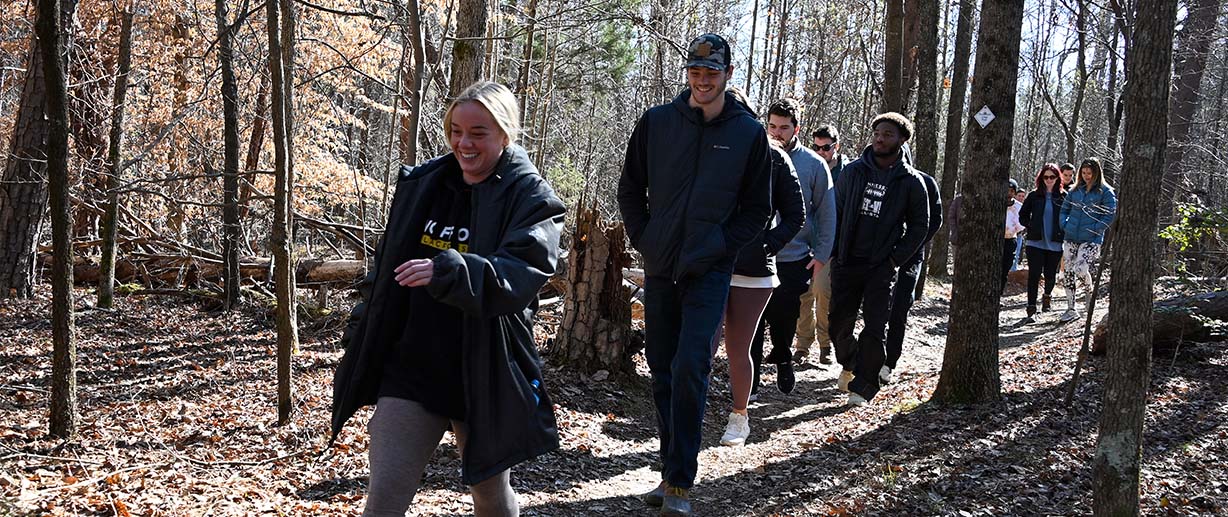Students in the “Take a Walk!” Interim class walked throughout the month of January. Some walks were in silence while paying close attention to their surroundings. There were walks that included interviews with Spartanburg residents using a popular trail. Some were in city neighborhoods. Others were in the woods.
All walks provided time to reflect on an activity that can be taken for granted. While in the classroom, students discussed readings focused on historical, spiritual and cultural themes related to walking. There also were conversations about the walkability of communities.
“It seems so basic and so small, but it can really transform a community,” says Dr. Jeremy Morris, assistant professor of biology.
During a 43-degree January afternoon, with small patches of snow and ice still visible along the Southside Trail from a winter storm nearly two weeks earlier, Collin Springer ’22, a finance major from Newberry, South Carolina, thought about a class reading, “Desert Solitaire,” which was written by park ranger Edward Abbey.
“We talked a lot about people who know a lot about the land they’re on,” says Springer while hiking five miles. “It has me thinking about what I’m walking through.”
The Southside Trail is not far from Croft State Park. It’s through what was farmland, and the class stopped near a small family burial plot with tombstones from the 1800s.
While walking along Fairforest Creek during the hike, Morris pointed out a tree that had been chewed by a beaver. There also was an opportunity to discuss beaver trappings in the area during the 1800s and early 1900s.
Morris and Dr. Patrick Whitfill, assistant professor of English, found teaching the class to be a good example of the sciences and humanities coming together.
“I think the whole point of a liberal arts education is to suggest that the whole human matters, that we need to educate holistically, not only in regard to a profession or a career track,” Whitfill says. “A course like this shows how everything can and does connect. We can study walking as an evolutionary process, a cultural experience, a religious pilgrimage, a therapeutic tool, a means of conveyance, and we can, and do, read and write poems, stories and songs about the experience of existing outside, simply and completely with nature.”
“Take a Walk!” was among a few Interim courses that incorporated discussions on mindfulness and opportunities to practice it, meditation and exercise. Other classes touching on those topics included “Yoga and Natural Healing,” “Bake Breathe Hike: A Journey into Relaxation and Restoration,” “Roots of Meditation, Mindfulness, and Self-Discipline” and “The Foundations of Happiness: Mindset, Nutrition and Exercise.”
Lexi Bertsch, a finance major from Lake Worth, Florida, is a member of the Wofford women’s volleyball team. She says she finds meditation helpful as student-athlete. But she never considered meditating while walking until one of the class’ walks focused on it.
“I never thought of meditating while doing something physical,” Bertsch says. “I want to keep trying it.”
Connor Mouzon ’22, a biology major from Alcolu, South Carolina, had moments during the five-mile hike when she thought about reading the essay “The Devils Highway,” which is about immigrants walking through the desert along the Mexico and Arizona border.
“We’re walking for leisure and they’re walking to better their lives,” Mouzon says.
